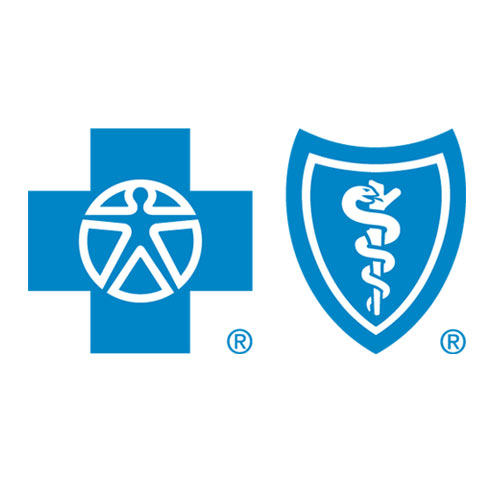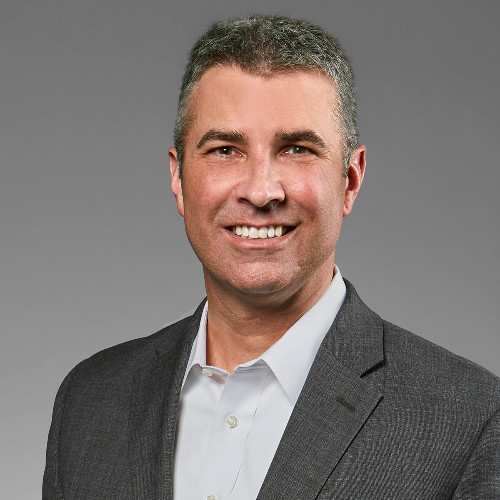Expert recommendations to care for your mental health among the unknowns of COVID-19
June 26, 2020The COVID-19 pandemic may have shifted past a phase of stay at home orders, but the effects of the fear, isolation and stress caused by the many unknowns of this virus remain at the forefront of our everyday lives.
As we navigate a world of wearing masks out in public, limiting social gatherings and figuring out what our school and work environments will look like into the fall and beyond, the world continues to be filled with a great deal of unknowns.
 And with the continued uncertainty—alongside the trauma and anxiety stirred by the recent unrest following the unjust death of George Floyd—more and more people are experiencing adverse impacts on their mental health.
And with the continued uncertainty—alongside the trauma and anxiety stirred by the recent unrest following the unjust death of George Floyd—more and more people are experiencing adverse impacts on their mental health.
To gain a better understanding of how the pandemic has affected mental health, we had a conversation with Dr. Steven Sehr, senior medical director for behavioral health at Blue Cross and Blue Shield of Minnesota, and Dr. Ryan Van Wyk, specialty lead for the North Memorial Health Mental Health Services Center.
The following is what they have seen and their thoughts on how we can support one another to work through these challenging times.
Q: To start, can we talk about how you have seen the coronavirus pandemic affect people’s mental health?
Dr. Sehr: COVID-19 has generated two very clear emotions. Early on, there was incredible fear and a sense of paranoia about the virus—especially about getting it and going out. At that point, we didn’t know much. It was rational, but it was paralyzing.
As time has gone on, we are seeing more of the effects of social isolation. There’s depression, a significant rise in severe substance abuse, despair, isolation and hopelessness. Then, on top of being isolated, many people are unemployed and don’t know when they’ll go back to work. You have all of that. That is not going to suddenly improve as we continue to open up more.
"As time has gone on, we are seeing more of the effects of social isolation. There’s depression, a significant rise in severe substance abuse, despair, isolation and hopelessness."
Dr. Van Wyk: For some people, the initial fear was compounded as they lost their normal resources—social connectivity, outlets for stress, and having a routine and structure in their day. This was especially challenging for people who lost employment or had some significant disruption to their daily lives.
In some cases, this pandemic has exacerbated symptoms for people previously coping with trauma, validating their sense of fear that the world is not safe—and heightening their sense of threat. So, that has stirred up a lot of symptoms that people may have been managing in a more effective way prior to the pandemic.
Q: How do we support one another through COVID-19 and social isolation?
Dr. Van Wyk: A particular challenge currently with supporting one another is the removal of interaction with people. As a therapist, my role is often to help people make sense of what’s happening and normalize the range of reactions they may be having. With COVID-19, it is difficult to find support because we’re so cut off in our interaction with others and people have been significantly disrupted from being able to access support systems and their spiritual and work communities. Finding ways to maintain connection with one another is vital right now.
"One of the simplest things we can all do is simply to treat everyone with a sense of kindness and graciousness, while acknowledging to ourselves that we don’t know how the pandemic and other recent events are affecting them."
With this in mind, I think one of the simplest things we can all do is simply to treat everyone with a sense of kindness and graciousness, while acknowledging to ourselves that we don’t know how the pandemic and other recent events are affecting them. Creating spaces, whether virtually or over the phone, for people to share how they are doing and the stress they are experiencing is really important to feel less alone.

Q: What has been the most surprising outcome from this pandemic to date?
Dr. Sehr: What’s been surprising to me is how quickly telemedicine and teletherapy have been accepted. My sense is that that is going to change some of the delivery of these services going forward. I don’t think it’s going to retrench all the way back to where it was.
"What’s been surprising to me is how quickly telemedicine and teletherapy have been accepted… I don’t think it’s going to retrench all the way back to where it was."
Dr. Van Wyk: Telemedicine certainly increases access. During this time, we’re really seeing the benefits of at least having it available as an option for clients that might not have otherwise pursued care.
Q: How can we help our friends and neighbors who may feel isolated or uneasy interacting with others during the pandemic?
Dr. Sehr: I think it’s important for all of us to keep reminding people that they’re not alone; that there’s help. We need to get the word out to those who really feel isolated that there’s help available. We can all reach out to people who feel lonely and check in on them. There are many people doing food deliveries and well checks. I think that’s wonderful and can be done by anyone.
"I think it’s important for all of us to keep reminding people that they’re not alone; that there’s help. We need to get the word out to those who really feel isolated that there’s help available."
Dr. Van Wyk: I think an important way to feel empowered is in how we look out for one another. As I’ve taken walks with my wife, I’ve noticed how people are tracking each other’s movements across streets and navigating to maintain distance. It’s an interesting phenomenon, as an expression of care without a lot of verbal interaction. Making choices like social distancing and masking up to flatten the curve can help us feel that we’re doing something. At the same time, reaching out in ways that are possible with social distancing can help people feel less alone.
There’s also a benefit, at times, in reducing some of the news that we take in. This can lessen the feeling that there’s nothing we can do, which leaves us feeling powerless. Sometimes, taking a break from that can be helpful.
Q: How can we support health care workers during this pandemic?
Dr. Van Wyk: There are a lot of layers to the impact on healthcare workers. I think the toll that this frontline work is taking on healthcare workers is only beginning to be visible and additional support will be needed after the immediate healthcare response. Acknowledging the sacrifice that they have made in putting their lives at risk to provide care to others is important.
"There are a lot of layers to the impact on healthcare workers…Acknowledging the sacrifice that they have made in putting their lives at risk to provide care to others is important."
In addition to the strain of responding to the pandemic, there are unique factors that medical professionals are trying to navigate. For instance, medical professionals now have to wear multiple layers of protective equipment in any patient interaction. It’s a strange experience on both sides of the equation. Gloves, masks and face shields help people feel more protected, but they also create a sense of disconnect between provider and patient, such as not being able to see a smile which changes the care experience.
As to what we can all do, it’s really great to see how people stepped up to support frontline workers. The support from those actions has really been felt.
Q: How can the health care system address the disparities being exacerbated by this pandemic?
Dr. Sehr: The health care industry has to be thinking more and more about the health disparities. People of color are dying from COVID-19 at much higher percentages. We need to be culturally sensitive and make sure all communities know of the services available to them. There are many factors and this pandemic is exacerbating existing disparities. [Unfortunately,] it’s not a simple issue.
"We need to be culturally sensitive and make sure all communities know of the services available to them. There are many factors and this pandemic is exacerbating existing disparities."
Dr. Van Wyk: There is a significant lack of diversity [among professionals] within the mental health field and there are systemic obstacles for people of color becoming providers. As the pandemic impacts communities differently and exacerbates existing disparities, the lack of representation can act as a barrier for people to receive care.
One of the disparities that exists is access to care. This has continued with the transition to telemedicine as there are many people who don’t have technology access to do a video consultation—they can only access it by phone. So, that impacts the care experience, especially if they are seeing someone for the first time or only hearing a voice on the phone. Making quality care more widely accessible is another layer of the challenge that we need to continue to work on solving.
"One of the disparities that exists is access to care…Making quality care more widely accessible is another layer of the challenge that we need to continue to work on solving."
Dr. Sehr: I think as we try to increase access to telemedicine, we can look what schools have done with virtual learning. I’ve seen school districts that have identified students that didn’t have a laptop or fast enough Internet and went out and supplied those to students—so there was equity in access. I think we can learn from examples like this as we seek to take on these big challenges.
Q: Amidst the pandemic, the long-standing issue of racial injustice has come to the forefront . That’s certainly taking a toll on many. What ideas are you sharing with those having tough conversations?
Dr. Van Wyk: The current social awakening around injustice and systemic racism is long overdue. I think the call to each of us is to examine our own participation in these systemic forms of oppression and to participate in the work of anti-racism.
A commitment to anti-racism means that we acknowledge the ways in which we have internalized racist, white supremacy ideas as normative and how those ideas show up in our thoughts and actions. Then the work is to change ourselves and participate in changes for equity at individual, communal and societal levels.
"Change is not going to happen immediately or all at once, so it is important to take it one day at a time. We can start immediately with listening, reading and educating ourselves and finding meaningful ways to participate in change efforts in our local community."
Change is not going to happen immediately or all at once, so it is important to take it one day at a time. We can start immediately with listening, reading and educating ourselves and finding meaningful ways to participate in change efforts in our local community.
The past decade has seen a surge in fantastic materials for people to educate themselves on the history of racism in America and the changes that are needed. It is so important to engage in that learning and reflection. Additionally, finding ways to actively participate in community in the work of anti-racism is vital. There is much work to be done—and importantly, we need to find ways to engage in that work alongside others.



